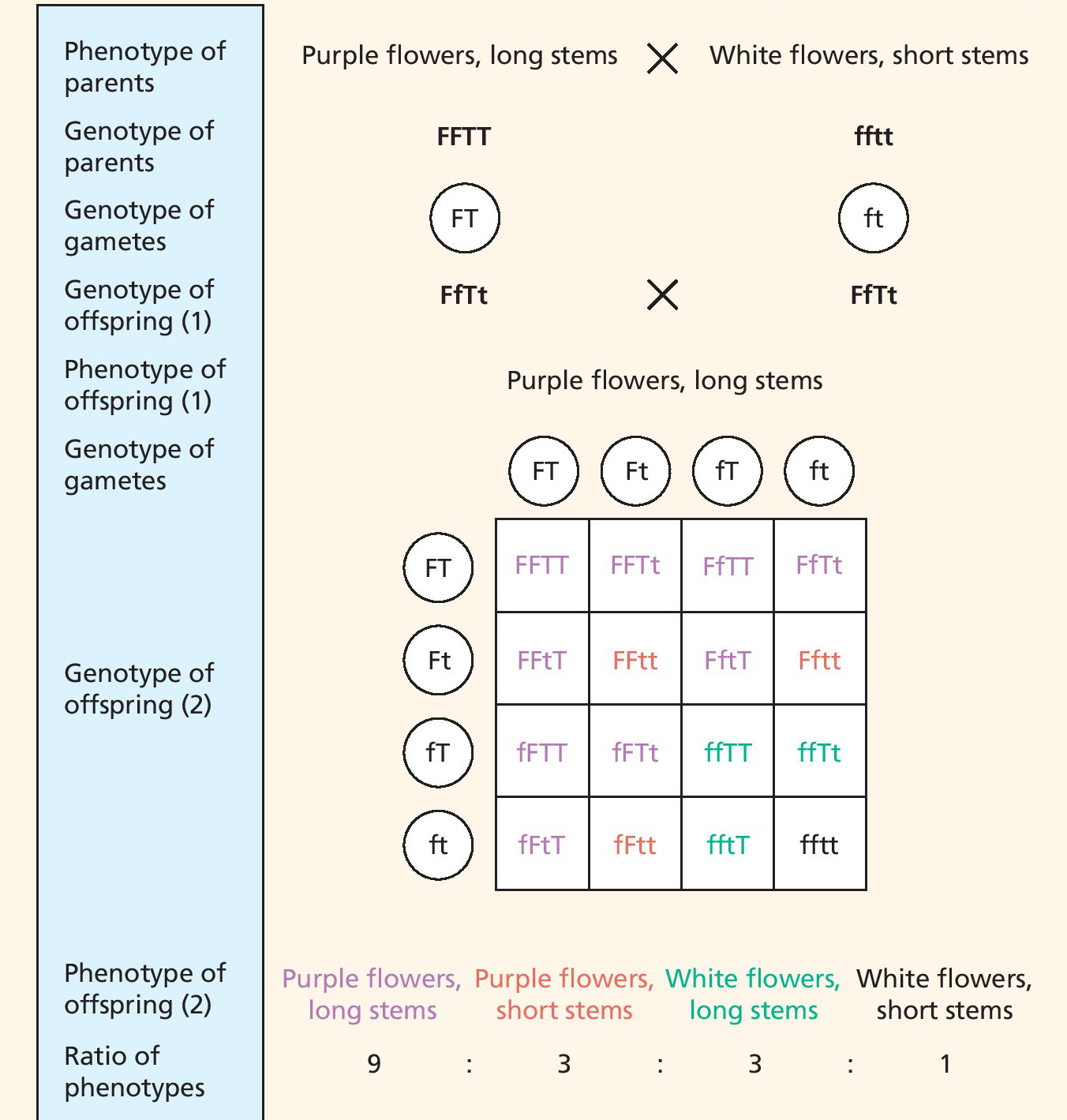
In your GCSE biology course, you studied monohybrid inheritance – the inheritance of one phenotypic feature controlled by a single gene. As with many other topics, A-level and SQA biology courses show progression from this to the study of dihybrid inheritance – the inheritance of two phenotypic features controlled by two different genes. The basic principles are the same as those for monohybrid inheritance and A-level students quickly develop the skill of interpreting dihybrid crosses. Most students follow a specification that also includes the concept of epistasis. Unfortunately, this topic seems to cause difficulty for many students. It is, however, worth getting to grips with this concept.
Let us start with a reminder of dihybrid inheritance. Figure 1 shows a typical genetic diagram involving dihybrid inheritance. In this case, it involves the inheritance of two phenotypic features in pea plants (Pisum sativum), controlled by genes on different chromosomes (unlinked) that have no effect on each other (non-interacting). In pea plants:
Your organisation does not have access to this article.
Sign up today to give your students the edge they need to achieve their best grades with subject expertise
Subscribe




